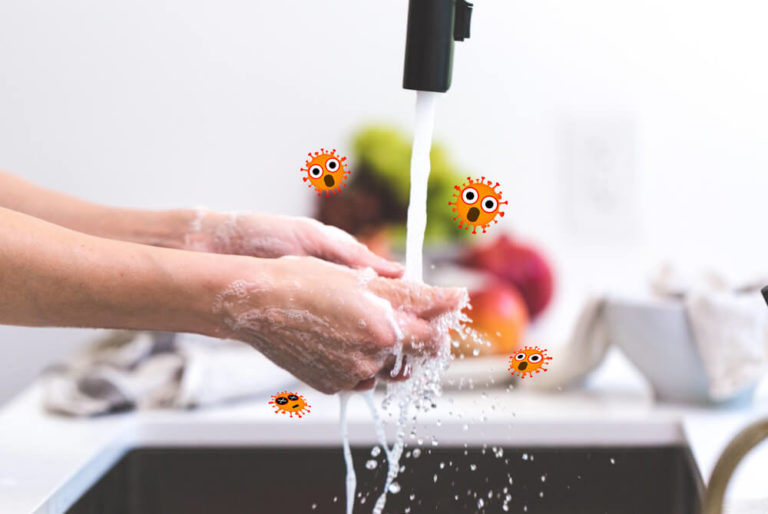
In order to prevent being diseased and transferring germs to others, CDC advises washing hands specifically. Based on evidence from a variety of trials, guidelines for correct handwashing and hand sanitizing were drawn up.
Firstly, why wet your hands with smooth flowing (hot or cold) water?
Sterile flowing water should be used to wash hands. If possible, it can also boost health when washing with non-potable water. However, warmer water may cause more discomfort to the skin and is more expensive. The waters do not seem to be affecting bacteria.
Shifting off the faucet after wetting hands saves water, and there is no evidence to show whether a large amount of germs is passed from hand to faucet.
It’s more effective to use soap to wash hands than just water because soap surfactants raise soil and skin bacteria.
Secondly, why lather your hands by rubbing them together with the soap?
Lathering and scrubbing hands produce friction that lifts dirt, graft, and skin microbes. Microbes have a high concentration on all hand surfaces, especially under the nails. Thereby cleaning the whole hand is necessary. So be sure to lather the backs of your hands, between your fingers, and under your nails.
Thirdly, why scrub your hands for at least 20 seconds?
Determining the best washing time is challenging because few trials have been carried out on the health effects of modifying washing hours. Almost all of those that remain have measured total reductions in microbes which can only a small proportion cause disease and do not quantify their health effects.
It is not related to improved health but to lower the number of microbes on the paws. Several variables will affect the optimum washing period, including the form and amount of soil in your hands and the laying of your hands. Surgeons may contact disease-causing germs, for example, and risk transmitting dangerous diseases to susceptible patients, so that they may need to wash their hands longer than someone cooking a home meal.
However, research shows that, for around 15-30 seconds, washing hands extracts more germs from hands than passing for a shorter period.
Need a timer? Hum the “Happy Birthday” song from beginning to end twice.
Fourthly, why rinse your hands well under clean, running water?
Soap and friction help lift dirt, grease, and bacteria from the skin, like disease-induced germs, so that they can be rinsed away from their fingertips. Even, removal of soap reduces the soreness of the scalp. Because hands may be recontaminated, sterile running water can be used if rinsed in a residual water basin that has been polluted by prior use. Waiting to use a paper towel to turn off the roughage after rinsing the hands leads to greater use of water and paper towels, and tests suggest that this increases health.
Lastly, why dry your hands using a clean towel or air dry them?
Germs can be more quickly passed to and from saturated hands, so the hands should be dried after washing. However, since there are few reports on hand drying and conflicting studies, the safest way to dry hands remains uncertain.
Furthermore, several of these experiments compare the available concentrations in various hand-drying methods of microbes and not just germs that cause diseases. The removal of microbes from hands has not been proven to be related to improved health. Studies say, though, that the easiest way is to dry a clean towel or the air.